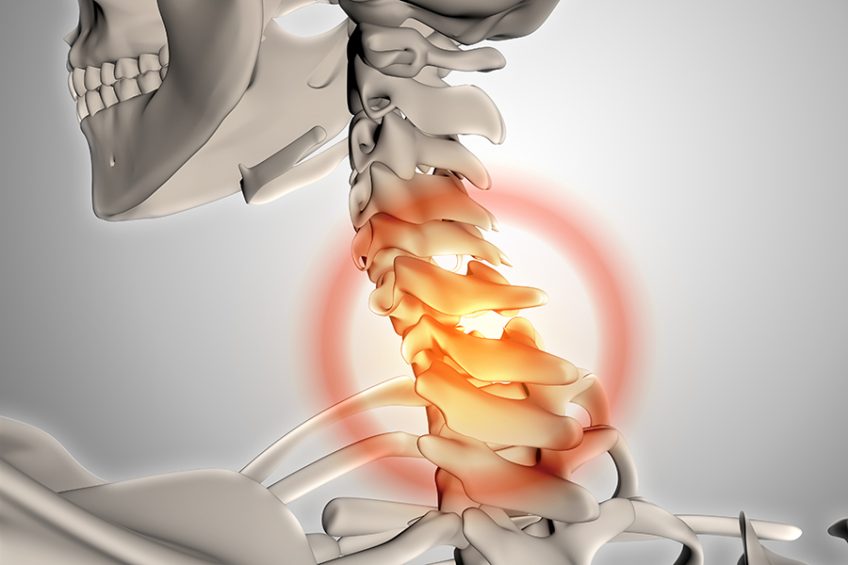Torticollis (tortum collum) is characterized by unilateral retraction of the sterno-cleido-mastoid (SMC), leading to an asymmetrical position of the head and neck.
Torticollis (crooked neck) is one of the most common disorders of the neck and is the flexion, extension or twisting of the neck muscles beyond their normal position. In torticollis, the neck tends to twist to one side, causing the head to tilt. Torticollis is accompanied by pain and limited movement of the head.
It is usually the result of weakened muscles due to incorrect posture or overwork. Torticollis generally occurs in both sexes with a slight predisposition to females.
CONTENT:
Types
There are several types of torticollis. The type of torticollis can be described depending on the symptoms and the time of onset of the condition. This disease can be common, congenital, spasmodic or symptomatic.
Common torticollis – which occurs after a sudden and forced movement of the neck, after an inappropriate position during sleep. In general, common torticollis does not require specific treatment.
Congenital muscle torticollis (TMC) – is a condition detected in infants, at birth or shortly after. It is characterized by the rotating deformation of the cervical spine with the secondary inclination of the head.
Congenital torticollis is characterized by a unilateral contraction of the sternocleidomastoid muscle that forces the child to keep his head tilted toward the affected side. Favoring factors for producing TMC: high birth weight, male gender, pelvic presentation, multiple pregnancy, primiparity, prolonged labor, use of forceps or vacuum.
Therapeutic intervention should be early, to restore normal neck movements and to stop the process of skull deformity, facial asymmetry and asymmetric motor development.
Ultrasound and clinical examination confirm the diagnosis of TMC. Many cases of TMC can be successfully treated with conservative treatment, using active and passive neck stretching, active repositioning, postural control exercises designed to promote head rotation.
Spasmodic torticollis – is a painful condition in which the muscles of the neck contract involuntarily, causing the head to twist or turn to one side. Injection of botulinum toxin into the affected muscles often reduces the signs and symptoms of spasmodic torticollis.
Symptomatic torticollis – is one of the symptoms of a causal disease. Many injuries to the cervical spine or neck region can cause this disease.
Symptoms
Because spasmodic torticollis is an abnormal contraction of the neck muscle, patients will have their head turned to one side, and the neck and shoulder muscles will be tense, causing pain.
There may be muscle spasms in the neck that are sustained or jerky. Other symptoms may include shoulder pain, back pain, headache, neck cramps, muscle tightness, muscle aches or burning sensations.
In infants, symptoms include: tilting the head to one side, flattening the side of the head behind the ear, limited movement of the head and neck, asymmetry of the face, musculoskeletal problems such as hip dysplasia.
Treatment
The treatment for this disease is to relax the muscles in the neck area. Treatments may include medication, physical therapy, stretching exercises, surgery, chiropractic.
In most people, torticollis lasts no more than a few days, but can last up to a few weeks.
Ordinary or common torticollis disappears in less than 3 days after rest and after administration of analgesic and muscle relaxants.
The treatment of spasmodic torticollis consists of physical therapy, which aims to strengthen the muscles. To this is added the same basic treatment as for common torticollis or local injections with doses of botulinum toxin.
Combination therapy
Combination therapy greatly increases the effectiveness of torticollis treatment. Combination therapy combines several procedures, which complement each other. Some procedures are designed to reduce inflammation and pain, others to increase muscle strength, mobility, coordination, endurance or balance.
The treatment consists of a combination of movement therapy, electrotherapy and therapeutic massage. Physical therapy works through postures, stretching, mobilizations and physical exercises to tone the affected muscle.
Physical therapy helps reduce pain and muscle contractions and helps increase range of motion. Laser therapy stimulates blood circulation and helps to remove the adhesion processes.
In more severe cases, surgery on the nerves and muscles of the neck is an option, although the condition may return.


